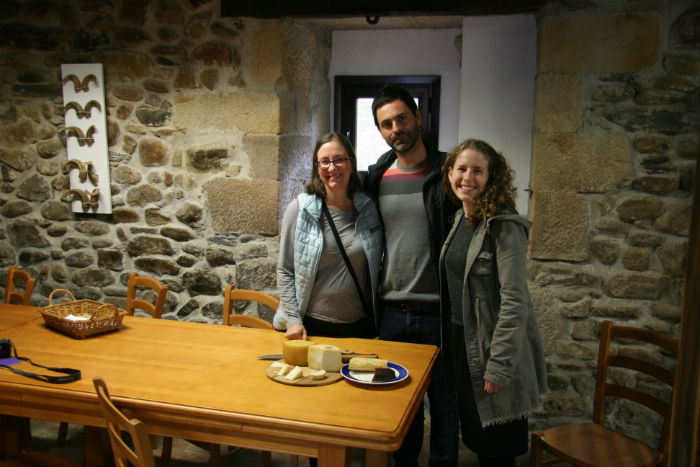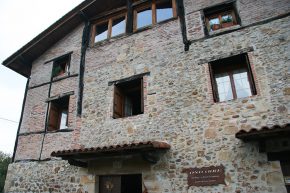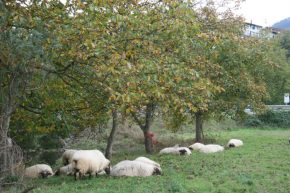A Visit to a Traditional Basque Sheep Farm

Editor’s note: This blog post was sent to us by Eneko Goiburu, a Basque cheese maker and farmer coming to the 2016 Folklife Festival. His original Spanish post was translated by Folklife Festival intern Grace Carroll.
Eight months ago, our Ondarre homestead had a pleasant visit from none other than researchers from the Smithsonian Institution in Washington D.C.! They were traveling through Basque country to experience firsthand the customs, ways of life, and traditional culture of our land.
The first thing we told them was that they had come to the right place. Our farm is about five hundred years old, and our family has a very long tradition of sheepherding. We have dedicated ourselves to this trade for at least six generations, and, though we do not know for sure, we are confident our ancestors were herding even earlier.
After greeting them, we began the usual tour of our home. We showed them the cuadra, where the sheep sleep in the winter, filled with stacks of hay, corn husks to de-kernel, newborn lambs, and more. Next we showed them the quesería, where we produce our treasured Denomination of Origin-certified Idiazabal cheese—drawing on contemporary knowledge while preserving the knowledge, and hard work of our grandparents—as well as the places where we refine and smoke the cheeses using traditional processes.
Because Ondarre is a small operation, we manage our flock and make cheese in a very traditional way. The researchers appreciated our daily work and our traditional way of doing things despite access to today’s technologies.
As we bid our farewells, they told us about the Folklife Festival. They told us that we would be perfect for it and invited us to participate! In one week, my parents and I will travel to Washington to teach how many Basque farms worked and how some continue to do so today.

We are so excited to share our traditions in the capital of the United States, from cheese making to other Basque household crafts that we do not practice very often but have not forgotten, like carding wool, making thread, knitting, and more.
Sometimes I feel that our ancestral customs and culture in Basque homesteads are not appreciated enough in our rapidly changing society. So it has been a wonderful to see that the Smithsonian values and gives recognition to our work in maintaining these traditions.
Meet Eneko Goiburu and his parents, Felix and Maria Carmen, in the Idiazabal Cheese tent at the 2016 Folklife Festival, June 29 to July 4 and July 7 to 10. During their presentations they will demonstrate how to make and smoke cheese, explain the use of sheep bells, as well as discuss tourism and environmental sustainability practices.
On July 1 and 8, the Goiburus will be joined by sheep from Grindstone Ridge Farm in Maryland.



